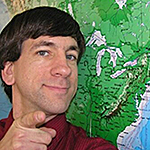All the big issues the world is facing today are fundamentally tied to space and place—they are geographic issues. To grapple with these issues requires a population that can assess and use geographic information to make wise decisions—in short, a geoliterate population.
So how can educators, researchers, and practitioners actively promote the inclusion of geographic knowledge, skills, and perspectives in education and society? I offer the following recommendations.
1. Tie geoawareness to the need for geography education.
A growing awareness of the geographic nature of problems from local to global scales, is evident, yet the realization that these issues can be better understood using the geographic perspective seems lacking. The professional community could take this opportunity to explain to the public what geography really is, why it is important, and how it can help society grapple with these issues. For example, as geographic perspective, content, and skills are becoming more valued by other disciplines on the university campus, geographers can open the dialog to interdisciplinary pathways of research.
2. Emphasize that maps are not just reference documents.
Many still regard maps largely as reference documents that are useful solely for looking up where something is. Our community must demonstrate how maps can be a doorway to discovery about the physical and cultural world and local communities in which we live.
3. Emphasize that digital maps are usually more useful than paper maps.
Paper maps are limited. They cannot be easily updated, modified, embedded, or transported. We must focus on the advantages of digital maps over paper maps.
4. Emphasize that maps are not just for geographers.
Maps are useful to broad sectors of society. They are valuable to epidemiologists studying the spread of diseases, climatologists studying climate change, or businesspeople siting new stores. Maps are essential tools for studying issues and solving real problems.
5. Focus on career skills.
Geotechnologies have been identified by the US Department of Labor as one of three major growth fields for the twenty-first century. The use of GIS and web mapping technologies builds skills not only in technology but also in organization, communication, critical thinking, and other skills needed by government, the private sector, academia, and nonprofit organizations.
6. Help students engage with the tools.
The bulk of geotechnology training at the secondary and university level over the past 20 years has been geared toward educators, rather than students. While this has the advantage of working with professionals who in turn could impact thousands of others, educators must realize that it is even more important for students to learn how to use these tools.


